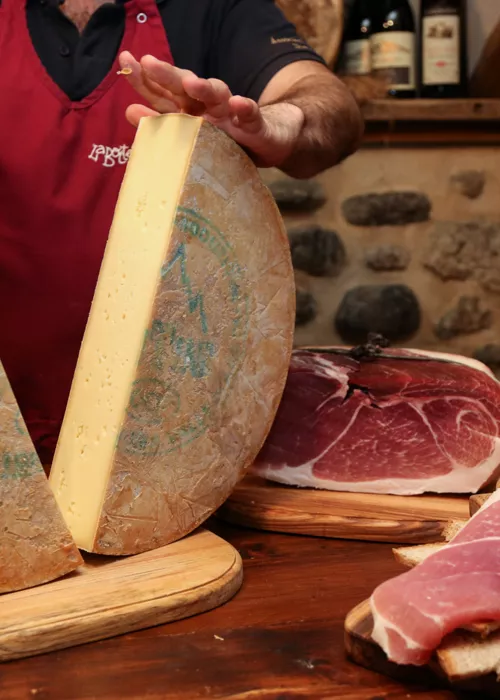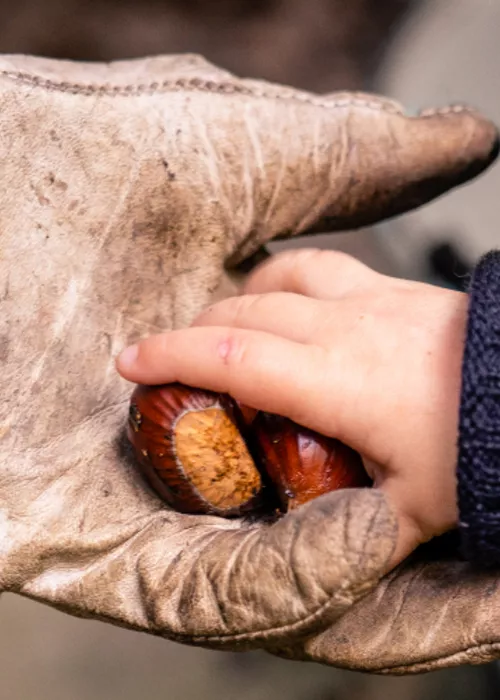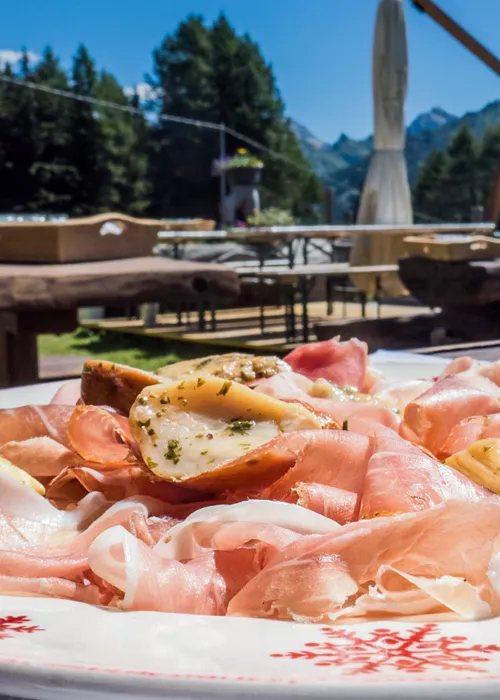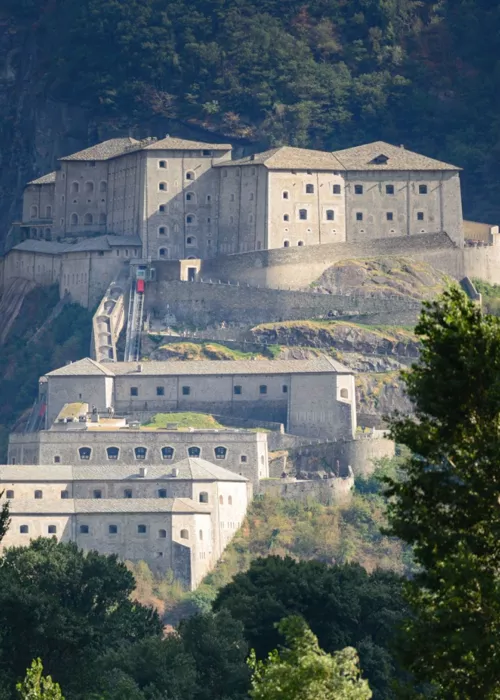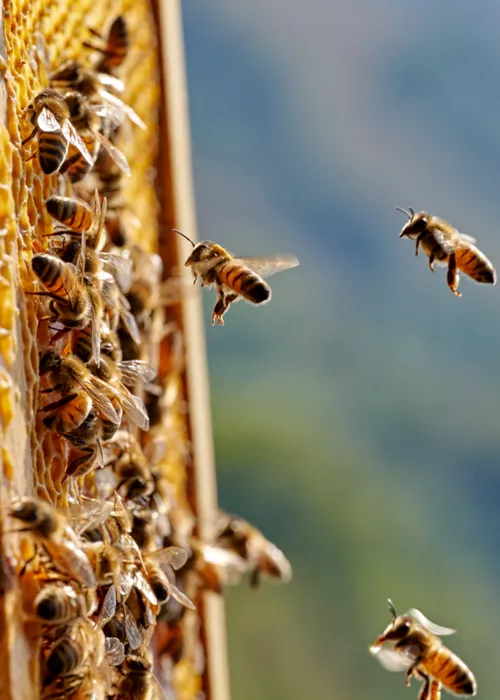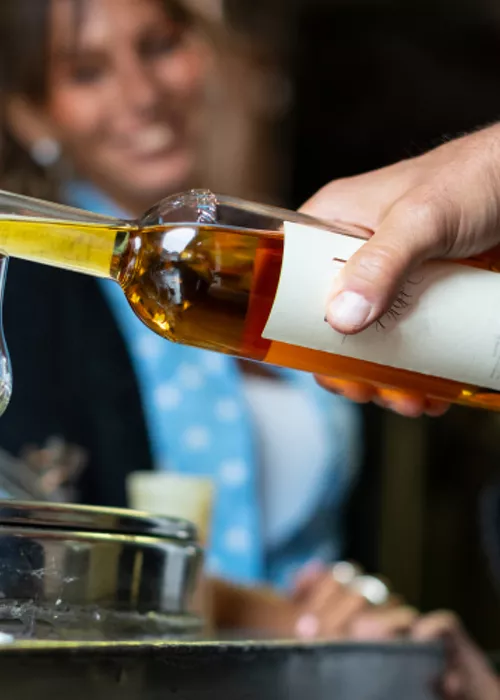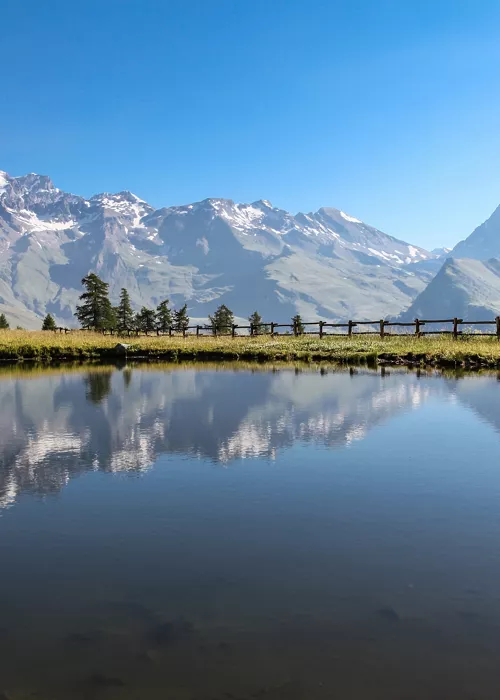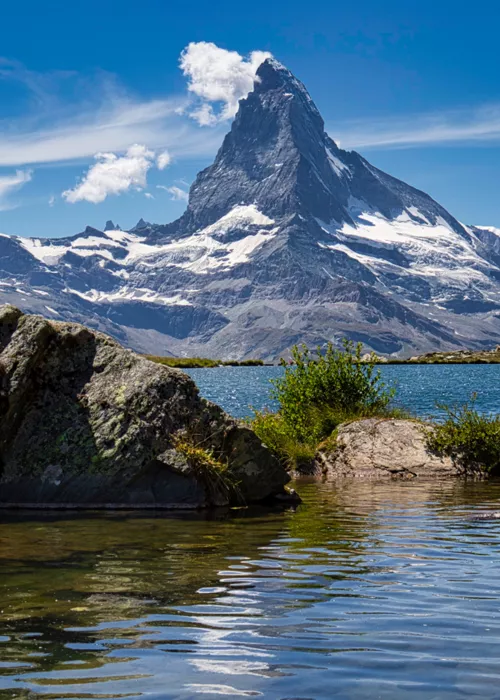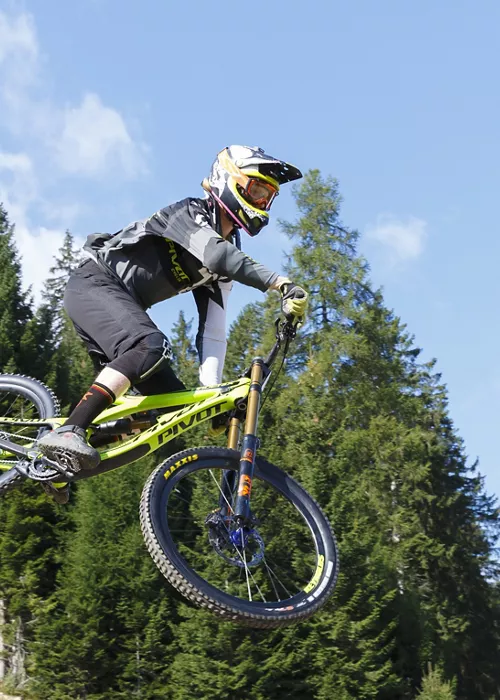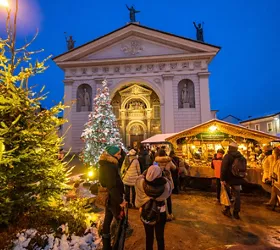The Aosta Valley Villages of Gressoney Saint-John, Bard and Donnas
9 minutes

Index
I loved visiting these three villages for a unique travel experience. In Gressoney, I discovered the Walser people with views of the Monte Rosa, the second-highest mountain in Western Europe and home to one of the most beautiful castles in the Aosta Valley.
Then, I was off to Bard. Best known for Fort Bard, but it’s also one of the prettiest villages in Italy.
In Donnas, I was in awe of one of the best-preserved parts of the Roman Road. Naturally, a trip to Donnas wouldn’t be complete without sampling some Donnas DOC red wine. It’s fantastic for a long weekend trip. However, there’s so much more to see, so I recommend staying for longer if time permits. I regretted only having three-and-a-half days to explore
Gressoney Saint-John

What makes Gressoney unique is that it’s home to the Walser people, a group who originated in the Swiss Canton of Valais and speak German, or Titisch as it's known in the Gressoney region. I loved learning about the distinctive Walser architecture, traditional costumes and language.
Gressoney Saint-Jean has been awarded the "Orange Flag" certification (the environmental tourism quality mark) from the Italian Touring Club. Knowing that Gressoney values sustainability made me like it even more.
Top 5 things not to miss
- Do a guided tour of Castel Savoia
- Follow in Queen Margherita’s footsteps on the “Queen’s Walk”
- Hike to the largest Walser settlement, the Alpenzu
- Go to see the Selbsteg, a natural bridge and a Walser settlement
- Visit the Walser Ecomuseum in Gressoney-La-Trinité
Queen Margherita loved the Gressoney region so much that she built a castle there. It was built from 1899 to 1904, incredibly fast for a castle at that time. It has 5 turrets and is decorated very elegantly, as you’d expect for what’s known as the “fairytale castle.” I loved the grandiose staircase and the sitting room, which offers exquisite views of Monte Rosa. Also of special note are the old photos of Queen Margherita on the Monte Rosa glacier, something very unusual for a queen to do at that time. A visit is by guided tour only.

While it’s possible to drive to Castel Savoia, I recommend following in the queen’s footsteps by taking the “Queen’s Walk.” It’s the same path that Queen Margherita of Savoy used to take whenever she left the castle. I started the easy walk from Gressoney Saint-Jean, passing Lake Gover and the waterfall Cascata di Underwald. I loved the views over Gressoney Saint-Jean and especially the views of Monte Rosa on the return trip.
I also loved visiting the Walser settlements. The biggest one is the Alpenzu Grande, and the only way to get there is by hiking, just as the Walser people traditionally did and still do.
There are 13 dwellings, all dating back to 1668 and still intact. The group of alpine houses are privately owned, so you can’t enter them. However, you can get something to eat or stay at the Rifugio Alpenzu.
The location is on a natural balcony providing spectacular views of Monte Rosa on a clear day.
The hike starts from Gressoney-Saint-Jean or Gressoney-La-Trinité. I hiked the later path, and it took me about 45 minutes to reach it.

If that’s too much of a hike, it’s possible to visit more accessible Walser settlements. I visited several, and one that I really enjoyed was located near the Selbsteg, a natural bridge. By the side of the road, you’ll see a long pulley system starting from the road, over the valley to the houses. It’s still used today to bring heavy materials to the Walser settlement since there are no roads. It’s less than a kilometre from the road but is still a long way if you have building materials or something else that’s heavy.
You’ll want to cross the natural bridge and go down to the river. Here, there’s a fantastic view of the natural bridge, the Walser settlement in the valley and another one with a church on the hill above it.
While it wasn’t open when I was there, my local guide told me the Walser Ecomuseum in Gressoney-La-Trinité is worth a visit. It’s made up of three buildings, the Country House – Puròhus from the 18th century, House Museum – Pòtzschhus and the Binò Alpelté mountain hut, a dairy hut located a short distance from the village.
Best time to visit:
Gressoney is a popular summer and winter destination, and those are good times to visit depending on the activities you want to do. However, to avoid the crowds, I recommend visiting in early fall or late spring. Many hikes were still accessible then, and it was gorgeous when I visited in the fall with hardly any tourists.
How to get there:
Gressoney Saint-Jean is an hour and fifteen-minute drive from Aosta. It’s also accessible by bus from Aosta with the “Pont-Saint-Martin – Aosta” line
Bard

Bard is best known for Fort Bard, but the village itself is also not to be missed. The medieval village is named one of the prettiest villages in Italy by Borghi più Belli d’Italia.
Top 5 things not to miss
- Visit Fort Bard
- Walk down from Fort Bard to Bard for spectacular views
- Stroll through the medieval village along the old Roman Road
- Go down to the medieval bridge for the best views of Fort Bard
- Discover the Bard Archealogical Geosite
Fort Bard overlooks the village of the same namesake. While there had been a much older castle there, the one there today only dates back to the 19th century, thanks to Napoleon. When he attacked, he expected a swift victory given the vast size of his army. Underestimating the strength and will of the Bard people, it took him two weeks. In true Napoleon fashion, he got his revenge by annihilating the castle.
Most of Fort Bard has been set up as museums and exhibitions that change periodically. I spent a couple of hours there but could have easily spent the whole day. There’s so much to see.
While it’s possible to take the elevator, I highly recommend walking down. I loved the views over Bard, the valley and the Dora Baltea River. It’s incredible and was one of the highlights of my trip.
While many visitors skip the medieval village of Bard, that’s a huge mistake. Borghi più Belli d’Italia has named it one of the prettiest villages in Italy. In historical times it was the only way to get to Rome, making it an important stop on the Roman Road. It’s also on the pilgrimage route, the Via Francigena. I loved saying hi to pilgrims.

The main parking is just outside the village gate. Head in the opposite direction of the fort towards the stone bridge. Dating back to 1250, it was the only way to reach Bard for centuries. The craftsmanship is magnificent. It’s also one of the best places to get a photo of Fort Bard.
Bard offers a free self-guided tour that can be downloaded on a Smartphone. I highly recommend this as it will really bring the village alive. I would have missed a lot of the history without it, and there’s a lot, given the buildings date back to the 15th and 16th the century. For example, at the gate, you can still see the gunshots from the Napoleon takeover. Also of note is the water fountain. Look closely, and you’ll see the year 1598 inscribed. It’s the oldest fountain in Bard. I also loved the remaining frescos of Casa Chalant. While many of them no longer remain, my guide pointed out a coat of arms on the left.
When you continue to the end of the village and reach another staff parking lot, there’s even more history, much older history, but it’s a bit hard to find. Fortunately, I had a guide and the mayor of Bard who knew exactly where to find the Bard Archelogical Geossite.
On the same side as Fort Bard, there’s an unmarked trail up some rocks. Here you’ll find small hollows in the rock that are linked to religious ceremonies from the Bronze Ages. There’s also a fertility slide which is said to help women get pregnant. This evidence shows that Bard has been inhabited since prehistoric times.
Best time to visit:
Bard is a great destination to visit year-round due to its mild climate and low elevation of 400 meters.
How to get there:
Bard is a 40-minute drive from Aosta. It’s also accessible by bus from Aosta with the “Pont-Saint-Martin – Aosta” line.
Donnas

Donnas is known for having one of the best-preserved sections of the Roman Road and is famous for its red wine, but there’s so much more to discover.
Top 5 things not to miss
- Discover the medieval village
- Visit the Roman Road and arch
- Explore the vineyards
- Hike up to Pramotton Tower
- Do a Fontina cheese and wine tasting
The first thing I did in Donnas was explore the medieval village. There’s an app offering a free self-guided tour of the village to help show the history which I otherwise would have missed. It’s near the Porta Orientale, the gate marking the entrance to the medieval village.
Enter the village, stopping at the points of interest as shown in the app. I also enjoyed greeting pilgrims walking either the Via Francigena or the Cammino Balteo. While the medieval village admittedly isn’t as pretty as others, there’s still a lot of history to discover.

Continue on to one of the highlights of Donnas to the Roman Road. It’s one of Italy's best-preserved sections of the Roman Road.
The first thing I noticed was the impressive arch. It’s hard to miss at 4-meters high. I can only imagine how long it took to carve out by hand. This is one of the highlights of the Roman Road in all of Italy!
Beyond the arch, the mayor of Donnas who accompanied me pointed out the milestone 36 in Roman numbers marking the distance between Donnas and Aosta in miles (approximately 50 km).
When I looked down, I saw the tracks from carts worn into the stone, which is very rare to see. It also gives you an idea of how many people and carts travelled on this part of the Roman Road.
Depending on which direction you enter Donnas, you’ll pass Pramotton Tower, a 13th-century tower and the first tower of the Aosta Valley.
It’s approximately a 30-minute hike starting from the hamlet of Pramotto. Gaze up at the entrance that’s 4-meters off the ground. The views over the valley and the vineyards are stunning.

Donnas is famous for its DOC wine. I loved the easy walk, the Vineyard Path, which takes you up to the vineyards. Afterwards, I did a wine tasting. My favorite was the award-winning Caves Cooperatives de Donnas ‘Napoleon’ Donnas. Despite all the destruction that Napoleon did, locals were proud that he enjoyed the wine, naming it after him.
I also enjoyed my visit to the Caseifico Vallet Pietro. It’s a cheese factory, with an emphasis on Fontina with a shop. Cheese and wine tastings can be arranged in advance for groups, or just visit the shop and pick up some fresh cheese. For both lunch and dinner, I made sure that my choice included Fontina - gnocchi with Fontina for lunch and polenta with Fontina for dinner - yum!
Donnas: Useful Information
Best time to visit:
Donnas is a great destination to visit year-round due to its mild climate. Unlike many other villages in Aosta that get a lot of snow, Donnas is located at an elevation of just 322 meters.
How to get there:
Donnas is a 40-minute drive from Aosta. It’s also accessible by bus from Aosta with the “Pont-Saint-Martin – Aosta” line.
Article written about the experience of Laurel Robbins.




